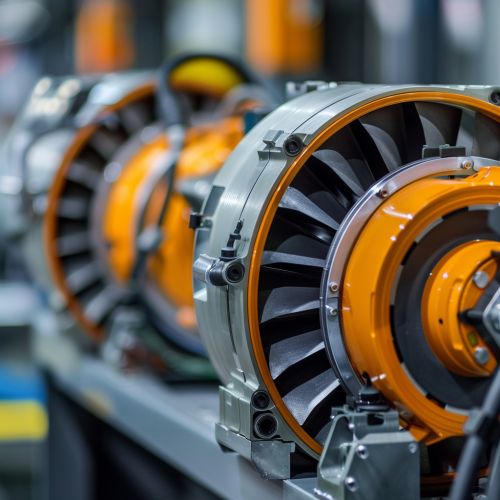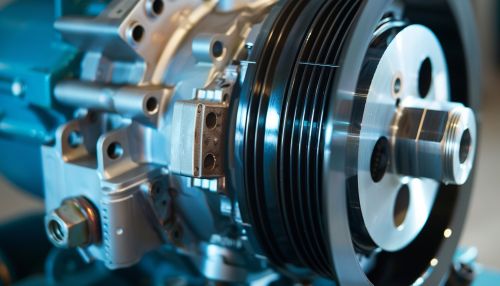Electric motor
Introduction
An electric motor is an electrical machine that converts electrical energy into mechanical energy. Most electric motors operate through the interaction between the motor's magnetic field and electric current in a wire winding to generate force in the form of torque applied on the motor's shaft. Electric motors can be powered by direct current (DC) sources, such as from batteries, motor vehicles or rectifiers, or by alternating current (AC) sources, such as a power grid, inverters or electrical generators.
History
Michael Faraday's experiments with electromagnetic rotation, a key principle behind electric motors, were first conducted in 1821. It was not until the invention of the commutator DC electric motor by British scientist William Sturgeon in 1832, that practical electric motors were produced. The first practical alternating current motor was designed by Nikola Tesla and built by Westinghouse Electric in 1888.
Principles of operation
Electric motors operate on three different physical principles: magnetism, electrostatics and piezoelectricity. In magnetic motors, magnetic fields are formed in both the rotor and the stator. The product between these two fields gives rise to a force, and thus a torque on the motor shaft. One, or both, of these fields must be made to change with the rotation of the motor. This is done through commutation, slip rings and brushes, or electronic commutation.
Types of electric motors
Electric motors can be classified by the source of electric power, by their internal construction, and by their application. The most common types are DC motors and AC motors, the former increasingly being displaced by the latter.


Direct current motors
Direct current motors were the first type of motor widely used and the systems (motors and drive) initial cost tends to be less than AC systems for low power units, but with higher power the overall maintenance costs increase and would need to be taken into consideration.
Alternating current motors
Alternating current motors are known for their high power capability and flexible control characteristics. Their speed-torque characteristics are altered by varying the slip.
Special types
Other types of electric motors include synchronous motors, induction motors, brushed and brushless DC motors, coreless or ironless DC motors, linear motors, universal motors, and others.
Applications
Electric motors are found in industrial fans, blowers and pumps, machine tools, household appliances, power tools, and disk drives. They may be powered from a direct current source or an alternating current source. The smallest motors may be found in electric wristwatches.
